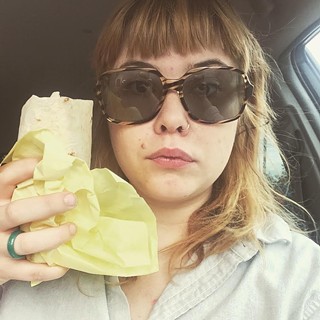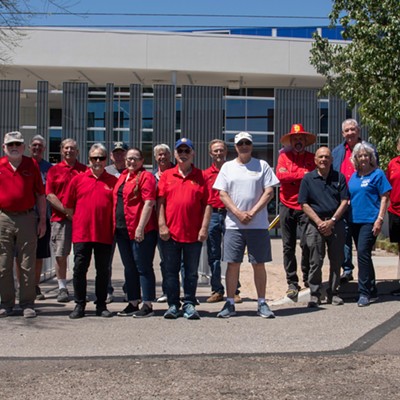How exactly is a pool, made from a repurposed dumpster, art?
Well, at Tucson’s Museum of Contemporary Art this summer you can find just that question out. Executive director Samuel Ireland and curator Jocko Weyland don’t hesitate to answer, either, citing the intent of these mobile pools as the reason they fit right into the contemporary art genre.
“The project was started to activate dead spaces in the recession and, bringing them to Tucson, we will be syncing them up with their original intent,” Weyland says. “The pools themselves are beautiful objects and contemporary art is meant to cross boundaries.” “In a general sense, you can tie it into social practice, as well as minimalism and post-minimalism,” Ireland adds. “It’s a way to get people to participate in art.”
Weyland actually started the mobile pools project as a part of a larger initiative called MacroSea in 2009 in New York City. Working along with developer David Belt, the project sought to rejuvenate and repurpose abandoned spaces, giving them new life and use at a time where more and more buildings were left vacant.
As a former professional skateboarder, Weyland says he’s been utilizing abandoned spaces for most of his life, such as a skater’s penchant for turning empty swimming pools into makeshift skate parks. However, the mobile pools served as part of a larger mission to use empty buildings as a space in which the arts community to thrive. Weyland says they almost got an entire former Home Depot building at one point.
“The pools served as a quick test for reactivating spaces,” Weyland explains.
The 2009 test was wildly successful in New York, garnering praise from critics from the New York Times and being commissioned by the city on a larger scale the following year. Five years later, three of the pools are being donated by Belt to the museum to continue the mission of MacroSea in a place that mirrors some of the issues the project originally set out to draw attention to.
“There’s a lot of potential in Tucson and a lot of unused space,” Weyland says. “There’s a correlation between what MOCA is doing and the project. The museum itself is a manifestation of the philosophy of MacroSea.”
Weyland elaborates that MOCA, which operates out of a repurposed and formerly unused fire department building, opened in a way that accomplished a similar goal to his and Belt’s original plans. The building’s Great Hall, which once served as a parking space for Tucson Fire Department’s trucks, will house the pools all summer, utilizing the space’s twelve roll-up doors and 16-foot high ceilings. The pools themselves are 26 feet long, eight feet high and eight feet wide, providing space for about 10 swimmers in each pool.
However, the mobile pools exhibit, while providing Tucsonans a good option to cool off in the summer, will also serve as a way to draw the community into the museum and raise awareness for it.
“It’s great to get into the pools but the goal is more than that,” Ireland says. “We want to showcase to locals that MOCA provides a place to gather and share ideas for artists.”
To that point, the summer scheduling will also feature a large, collaborative showcase of mostly local artists that will take over the museum’s entire East Wing. Six artists will each have their own gallery to present their individual pieces, displaying a range of motifs and media all in one show.
Artists featured in 6 Artists include Eli Burke, Bryan Crow, Ishi Glinsky, Jessica James Lansdon, Andrew Shuta and Jason Wright.
As with any exhibit at MOCA, members and non-members alike are welcome to view the 6 Artists showcase, which is free for the former and $8 for the latter. However, if you want to swim in those pools, you do have to become a member of the museum, which costs $4 per month.
Both exhibits will run from June 20 until September 26 with an artist’s reception for the 6 Artists showcase on Friday, June 19 at 7 p.m. The following day on June 20, the mobile pools will open to members from noon until 5 p.m. with music from One Mint Julep as well as food trucks. Weyland says he’s most excited to see his pools, which arrived on May 26 and started being installed on June 1, get put to use again.
“There’s something magical about seeing it and having people ask if it’s art or if it’s community engagement,” Weyland says. “You can see it’s both when you watch kids jumping into the pools.”
The summer series will culminate in an end of summer party on September 26 from 6 until 10 p.m., where members (free) and non-members ($10) can get one last dip in the mobile pools and listen to local bands Hey, Bucko! and Katterwaul, among others.
After the pools finish their MOCA run, they will be sold in auction to benefit the museum. Weyland and Ireland both hope that one of the many downtown local businesses will seize the opportunity to snatch up one of the pools and keep the pieces open to the community for years to come.
For more information on pool hours and the MOCA’s other exhibit, visit the museum’s website at www.moca-tucson.org. can.”










